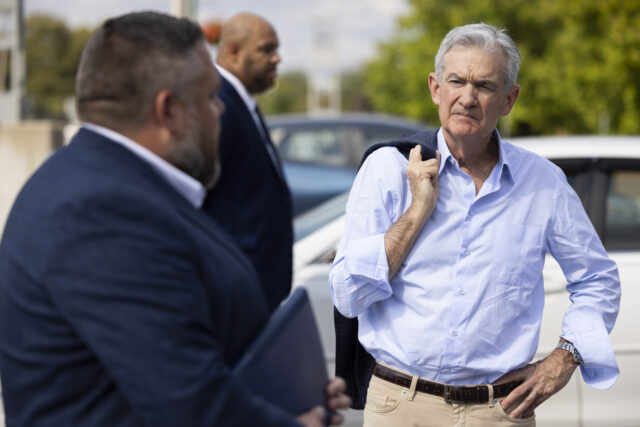Sales at U.S. retailers soared much more than expected in September, indicating resilient household demand and suggesting that the Federal Reserve may have more work to do to tame inflation.
Retail sales jumped 0.7 percent in September, the Commerce Department said Tuesday. Retail sales represent about one-third of all consumer spending in the U.S. and are considered a key leading indicator for the direction of the economy.
The sales figure was much stronger than expected, topping even the most bullish forecasts. The median forecast of economists polled by Ecoday was for sales growth of 0.3 percent, with a range of -0.1 percent to 0.5 percent.
The increase in sales cannot be attributed solely to the run-up in gas prices. Excluding gas stations, sales increased 0.7 percent.
Core retail sales, which exclude sales at gas stations and motor vehicles, rose 0.6 percent. These were expected to grow just 0.1 percent, with a range of forecasts from -0.5 percent to 0.3 percent. Excluding only auto dealers, sales rose 0.6 percent, above the 0.2 percent consensus forecast.
So-called control group sales — which are used to calculate gross domestic product and exclude food services, auto dealers, building materials stores, and gasoline stations — were up 0.6 percent, also beating the top of the range of forecasts.
There were also sizeable upward revisions to the August figures, indicating that sales have been stronger than thought for two months. The top-line August retail sales growth was revised up to 0.8 percent from 0.6 percent. The ex-autos figure was revised up to 0.9 percent from 0.6 percent. The ex-autos and ex-gas station figure was revised up to 0.3 percent from 0.2 percent.
The growth in sales was broad, indicating persistent consumer strength. Sales rose in eight of the 13 categories of retailers tracked by the Commerce Department.
The retail sales figures track nominal dollars spent by households during the month. They are adjusted for seasonal variation and holidays, but not for inflation. In September, the consumer price index rose 0.4 percent.
Sales at grocery stores rose 0.4 percent in September, four times as much as the consumer price index for food at home. Sales at health and personal care stores were up 0.8 percent. Gas station sales jumped 0.9 percent, a result of higher gas prices.
Sales are general merchandise stores rose 0.4 percent. Online sales rose 1.1 percent. Restaurant and bar sales were up 0.9 percent, well above the 0.4 percent rate of inflation for the Labor Department’s “food away from home” category.
Sales were down at clothing stores, home and garden centers, and electronic and appliances stores. Sales were flat at department stores, sporting goods stores, and furniture stores.
Sales at auto dealers rose one percent.
The U.S. consumer has proven much more willing to spend a monetary policy the Fed says is “restrictive” and aimed at lowering demand in the economy. Very low levels of unemployment have likely contributed to consumer resilience despite low levels of consumer confidence in the economy and low levels of approval for President Joe Biden’s economic policies.
Several Fed officials have indicated recently that they believe they may not have to raise rates further to put inflation on a path to the central bank’s two percent target, in part because longer-term bond yields have increased, which pushes up borrowing costs and tends to weigh on economic activity. Fed projections released at a meeting last month indicated that the Fed may raise rates one more time and then hold them steady for most of next year.
The climb in retail spending in August and September may force officials to rethink this view. Rising demand from U.S. households suggests that higher interest rates may be less restrictive than officials had been expecting.

COMMENTS
Please let us know if you're having issues with commenting.